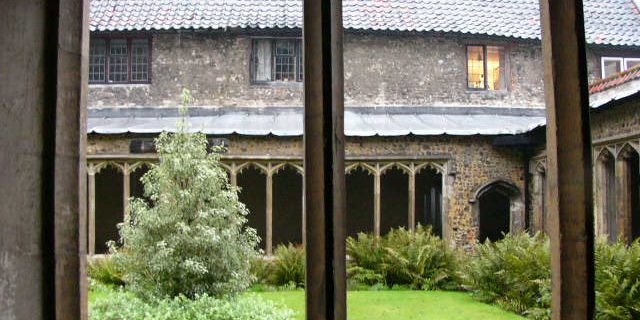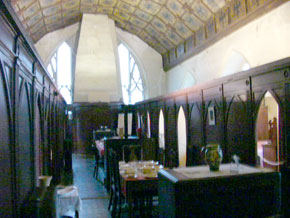
Aged priests, poor scholars, and sick and hungry paupers were the original beneficiaries of The Great Hospital in Norwich, founded in 1249 by Bishop Walter de Suffield. Clerics remained unmarried in this period so had no family to support them in old age. The poor scholars were boys selected on merit from local song schools and they received a daily meal during term times until they had achieved a good grasp of Latin. With this help, bright boys were given the chance to escape poverty and train as choristers or to enter the priesthood.

Food was plentiful and in addition to basic weekly rations of 10 oz of fresh butter, 3/4 lb of cheese, three 30 oz loaves of wheat bread and daily beer, the residents dined on a menu comprising ample quantities of boiled suet pudding, pints of broth, boiled beef and mutton, and light dumplings on Fridays.
The Great Hospital site contains much historic and architectural interest. Some buildings date as far back as 1380. Examples of this include one of the smallest monastic cloisters in England, a fine medieval refectory named St Helen’s House with excellent examples of Georgian decorated ceilings, as well as an 18th Century swan pit and a large Victorian hall.
Eagle Ward, named such due to the beautifully carved wooden ceiling depicting eagles, provided dormitory accommodation for single men. Each had a curtained off ‘cubicle’ and there was also a living area with an open fire, around which residents would gather in the evenings. A matron was in charge and all meals were provided at a long table which ran the length of the ward outside of the cubicles. There was a great sense of community and many previous residents and staff felt sad when the ward closed in 1961. Today, the Eagle Ward, now preserved as a museum, can be visited during the regular tours.